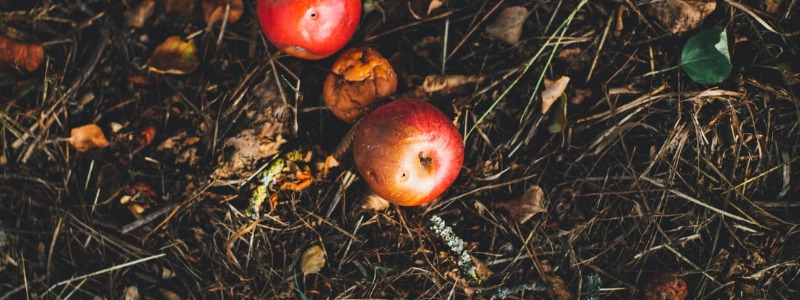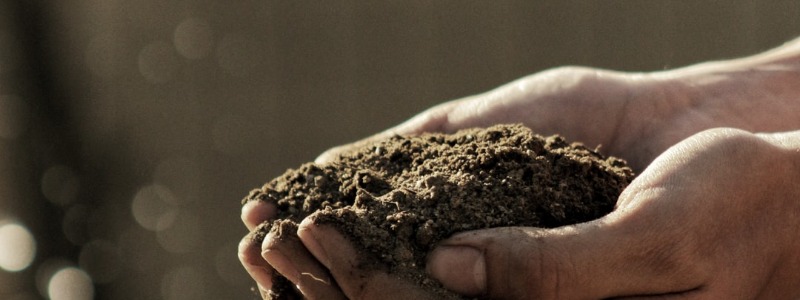All About Composting at Home
For years we’ve all been told, “Recycle, recycle, recycle.” Now there is evidence that a small percentage of the waste that PAY to be picked up for recycling is actually recycled – most is just ending up in a landfill.
Well, you can go beyond sorting your cans, bottles and paper and recycle your organic garbage – by composting! It’s really very easy to take your grass clippings, fruit and vegetable peelings, leaves and other once-living waste and turn it into rich, beneficial humus.
Container for your Compost
This can be as simple as rolling some fence wire into a cylinder about 3 feet across and anchoring it to the ground or as elaborate as a store-bought bin made just for composting. Two things to keep in min, though, are that you’ll need to get to the compost to turn it (more on that later) and air needs to get into the container. Those big plastic tubs with lids make great kitchen composting bins. Just poke a bunch of holes in the top and add some earthworms. Here’s a great container on Amazon on sale $76.99:
Types of Waste to Compost
There are two types of wastes that go into a compost pile. “Green” items contain nitrogen, am important ingredient to compost. The other is “brown” items. These contain carbon, which the composting organisms need. (Don’t let the word “organisms” scare you. They’re necessary for successful composting and their harmless. Unless you’re a decomposing apple core.) The best way to get your pile going is to layer equal amounts of both brown and green wastes. Here are some examples of both.

Green: vegetable peelings and seeds; weeds; grass clippings; green leaves.
Brown: straw; dead leaves; wood chips, ashes or sawdust.
Eggshells, manure from pant-eating animals, feathers and hair can all be composted, too. Keep away from grease and oils, fat, meat, dairy products, weeds with a lot of seeds, pet waste and the ashes from charcoal briquettes.
- You’ll need to add water to your compost pile, but be careful. Too much water may kill the bacteria and other critters and the pile will begin to smell bad. Keep the pile only as damp as a wrung-out sponge.
- About once a month, during warm weather, turn the pile with a pitchfork. You can turn it less often during colder months. When you turn your pile, check to see if it needs more water or if it’s beginning to smell bad. If it starts to develop a bad odor, turn it right away.
It will take six to nine months for your compost to be ready for the garden or lawn. It should smell “earthy” and clean. It should be dark in color and you shouldn’t be able to see any of the wastes you originally put into the pile.
Use the compost to enrich your soil in the garden, lawn and even in your flowerpots. Worried that you’ll end up with too much? Impossible. There’s always someone in the neighborhood who can use some compost!
Bugs of the Compost Pile
Insects are naturally drawn to compost piles. In fact, insects play an important role in the decomposition process in a healthy compost pile. Compost piles, according to entomologist Jack DeAngelis, have their own microecology (see References 1). Insects are required to create a balanced compost ecology. Though an excessive amount of a few particular insects may imply an imbalance, a healthy compost pile, given time, will reestablish its proper balance. Trying to remove one type of insect can upset the pile’s balance, slowing decomposition.
Your scraps and yard debris couldn’t become compost without some help.
Earthworms: These squirmy guys break up compost material by tunneling. This helps air get into the pile. They also eat the decaying plants. Don’t worry, they give something back. Their dropping, called castings, help to enrich the compost.
Bacteria: These little one-celled guys feed on the garbage. That’s what makes it rot.
Nematodes: A cup of compost will contain millions of these tiny worms. (They’re so small you’d need a magnifying glass to see them.) They eat decaying matter.
Millipedes: Always on the go, they spend their days munching on decaying plant material.
Fungi: Another way garbage rots is by being broken down into a liquid by molds and other fungi. The fungi absorb the liquid through their hyphae, or hair-like tubes.
Springtails: These tiny insects love compost. They not only feed on decaying stuff, but also on Nematodes!
Pill Bugs: Not really a bug, this armored critter is actually a crustacean – just like a shrimp. When threatened, they roll up into tight little balls.
Whew! A compost pile can get as hot as 140° F (that’s 60° C) or even higher as the bacteria inside goes to work. Keep turning the pile to prevent it from becoming too hot.

